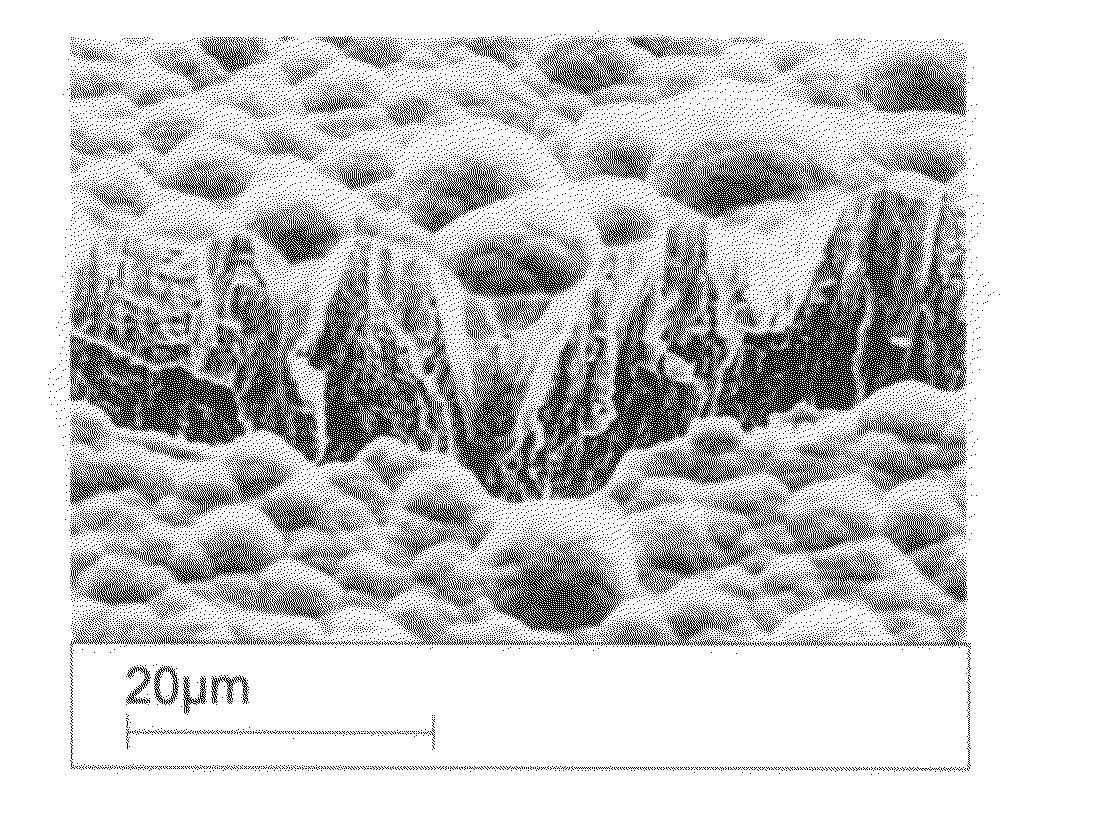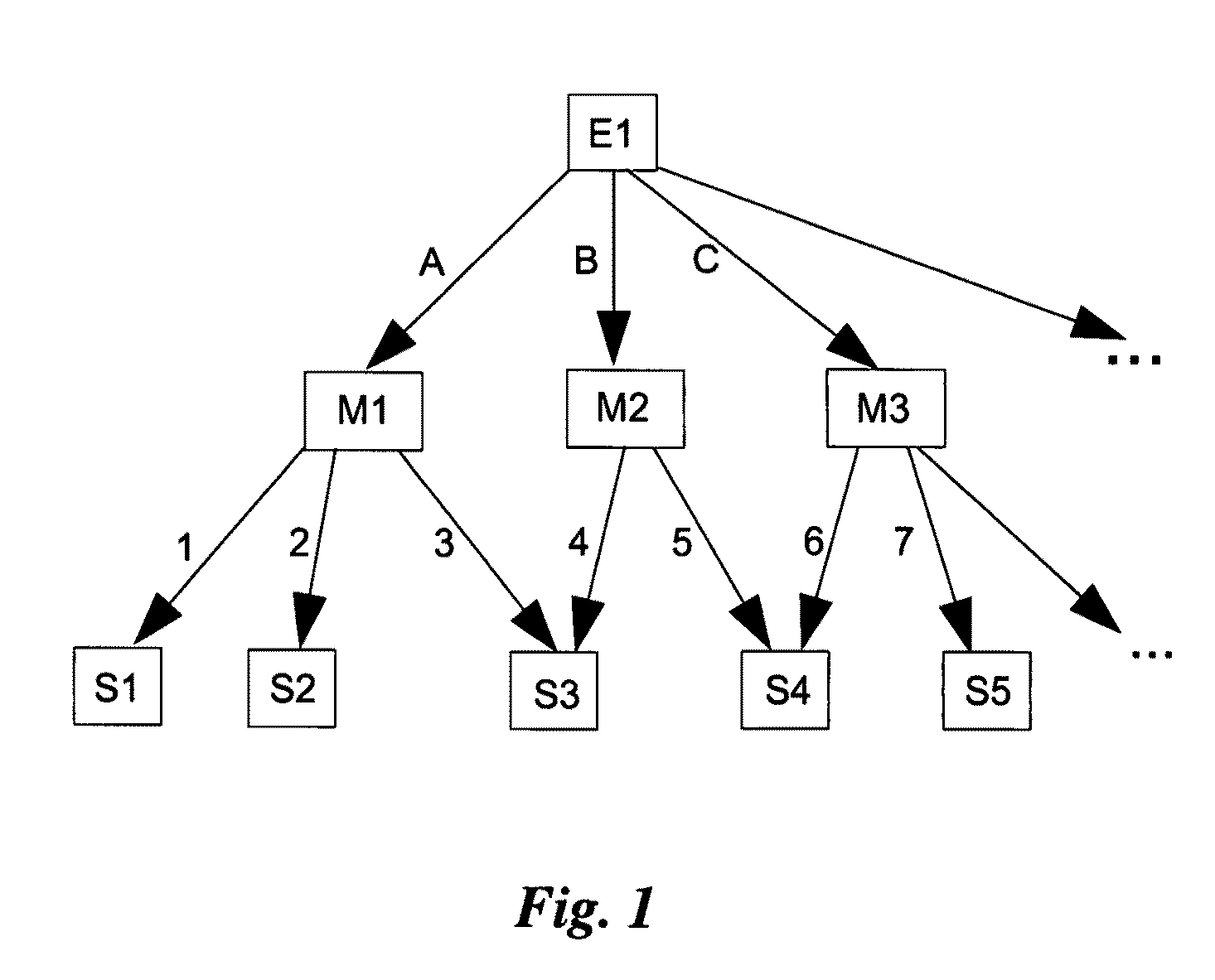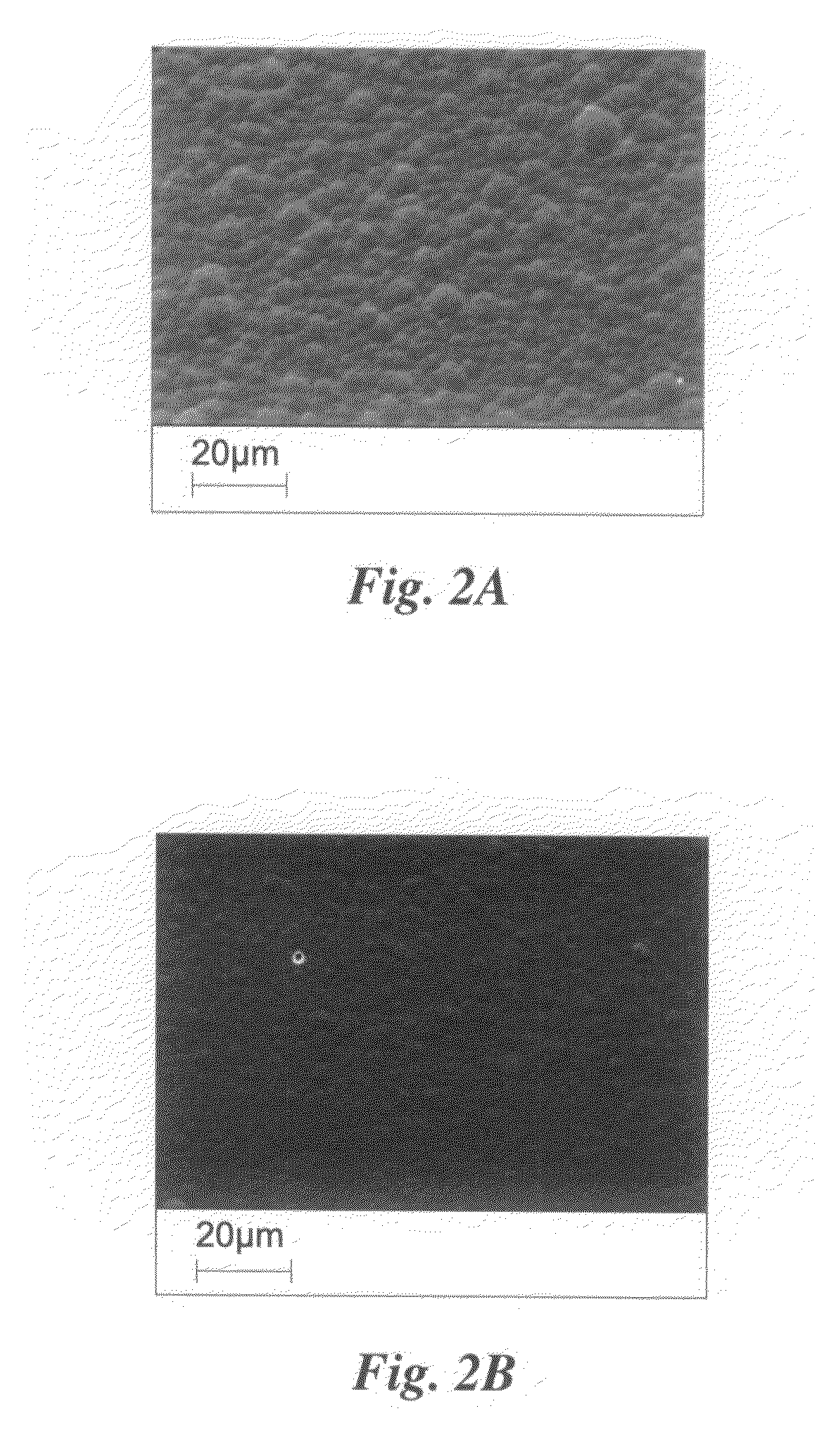Methods for tailoring the surface topography of a nanocrystalline or amorphous metal or alloy and articles formed by such methods
a technology of amorphous metals and nanocrystalline metals, applied in the manufacture of printed circuits, electrolysis components, manufacturing tools, etc., can solve problems such as the formation of pits on chromium films
- Summary
- Abstract
- Description
- Claims
- Application Information
AI Technical Summary
Benefits of technology
Problems solved by technology
Method used
Image
Examples
example
[0031]The use of etching methods to establish the surface morphology of nanocrystalline or amorphous metals or alloys has been reduced to practice for a particular case of a binary alloy of nickel-tungsten. Of the many existing methods that can be used to produce nanocrystalline or amorphous metals or alloys, electrochemical deposition has been used successfully. The electrochemically deposited nanocrystalline nickel-tungsten alloy is etched by a galvanostatic electrochemical etching method.
Electrochemical Deposition
[0032]The composition of the electrolytic bath, which is maintained at approximately 76° C., is shown in Table 1. The cathode and anode used for electrochemical deposition are a copper substrate and platinum electrode respectively.
TABLE 1Composition of electrolytic bathNickel sulfate hexahydrate (NiSO4•6H2O)0.06 MSodium tungstate hexahydrate (Na2WO4•2H2O)0.14 MSodium citrate dihydrate (Na3C6H5O7•2H2O) 0.5 MAmmonium chloride (NH4Cl) 0.5 M
[0033]Traditional electrochemical ...
PUM
| Property | Measurement | Unit |
|---|---|---|
| Current density | aaaaa | aaaaa |
| Thickness | aaaaa | aaaaa |
| Diameter | aaaaa | aaaaa |
Abstract
Description
Claims
Application Information
 Login to View More
Login to View More - R&D
- Intellectual Property
- Life Sciences
- Materials
- Tech Scout
- Unparalleled Data Quality
- Higher Quality Content
- 60% Fewer Hallucinations
Browse by: Latest US Patents, China's latest patents, Technical Efficacy Thesaurus, Application Domain, Technology Topic, Popular Technical Reports.
© 2025 PatSnap. All rights reserved.Legal|Privacy policy|Modern Slavery Act Transparency Statement|Sitemap|About US| Contact US: help@patsnap.com



